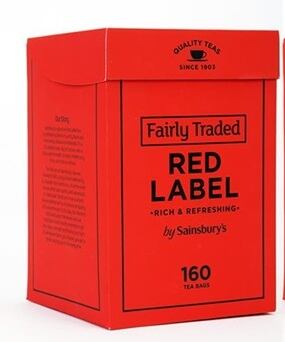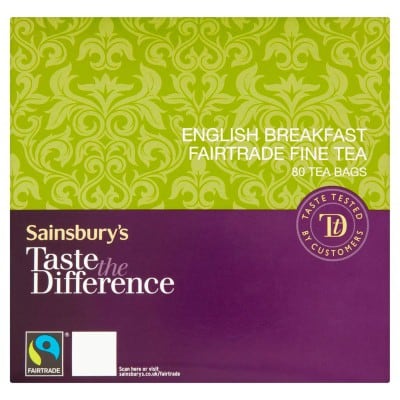Last year the UK supermarket turned its back on the Fairtrade Foundation certification: instead using a new ‘Fairly Traded’ label on its own-brand tea.
The Advertising Standards Authority (ASA) said consumers would have been likely to link the ‘Fairly Traded’ tea in the advert in question to the Fairtrade scheme; and that Sainsbury’s had not made enough effort to make it sufficiently clear it was a separate certification.
However, when asked to investigate if the advert was misleading as to the actual ethical standards of the products, the ASA sided with Sainsbury’s: saying its measures around payment of fair prices and working conditions remained consistent with consumers’ expectations.
Side by side: Fairtrade and Fairly Traded
What's in a name?
‘Fair Trade’ – a trading partnership that contributes to sustainable development by offering better trading conditions to, and securing the rights of, marginalized producers and workers, especially in developing countries.
‘Fairtrade’ – used to denote the product certification system operated by Fairtrade International (FLO eV, FLO-CERT) – or Fairtrade Foundation for the British affiliate.
‘Fairly Traded’ – Sainsbury’s own fair trade system
In October 2017 Sainsbury’s ran an advert for tea on its website, including images of the products and packaging. One product was ‘Sainsbury’s Fairly Traded Red Label tea’, which included a ‘Fairly Traded’ logo in a box.
The same logo appeared with the product description, linking through to a page on the program. On the same page there were also ‘Fairtrade’ tea products, displayed with the Fairtrade logo.
The complainant – a Member of Parliament – challenged whether this created a misleading connection to the Fairtrade scheme.
Sainsbury’s said the ad did not suggest a connection to the Fairtrade scheme, and that, since launching the scheme they had clearly marked the tea and had never claimed that it was linked to the Fairtrade Foundation or Fairtrade International, although they sold Fairtrade products as well as Fairly Traded products.
It added that it was natural for all tea products to be listed together in the same area.
Sainsbury’s said its ‘distinctive’ red and black logo was used with its products, and a link was included to more information about its scheme.
It also pointed out that ‘Fair Trade’ (as opposed to Fairtrade) was generic wording and its Fairly Traded mark had been successfully registered.
ASA: Advert likely to cause confusion for shoppers

But the ASA did not think the advert made it sufficiently clear that ‘Fairly Traded’ related to a separate scheme: and thus ruled that the advert was misleading.
It said that consumers were likely to be aware of Fairtrade; but not of other schemes.
“We noted the packaging for the Fairly Traded Red Label tea had a simple design and the ‘Fairly Traded’ logo consisted of simple black text in a black border against the red colour of the packaging, which was not obviously distinct from the style of the rest of the packaging.
“We noted the Fairtrade Ceylon tea was referred to as “Sainsbury’s Ceylon Tea”, in the same way that the Red Label tea was referred to in the ad as “Sainsbury’s Fairly Traded Red Label”.

“We considered the fact that their own brand products used two different fair trade schemes was likely to cause confusion for consumers, who might assume that the packaging was using ‘Fairly Traded’ as a descriptive term to convey that it was part of the official Fairtrade scheme rather than that ‘Fairly Traded’ was itself the name of a separate scheme run by Sainsbury’s”.
It added that the clickable link was not obvious enough, particularly given that consumers would be scanning the page quickly when shopping.
But Sainsbury’s is fair trade, says ASA
The ASA was also asked to investigate whether the standards of Sainsbury’s ‘Fairly Traded’ products matched up with expectations of fair trade.
The ASA noted that there were ‘potential differences with the Fairtrade scheme, such as the level of independence in the way it operated, notwithstanding Sainsbury’s explanation that it would be audited independently'.
However, it concluded that “the measures around the payment of fair prices and the working conditions were likely to be consistent with consumers’ assumptions on what a ‘fairly traded’ product might be, and because we had seen evidence that the scheme had a system in place for ensuring those things: [therefore] we concluded that the claim “Fairly Traded” was unlikely to materially mislead consumers as to the ethical standards applied to the products.”
A statement from Sainsbury's, responding to the ASA ruling, said: “We’re pleased the ASA recognises the high ethical standards of our Fairly Traded tea pilot. We note their comments about the online advert and this has been updated accordingly.”
